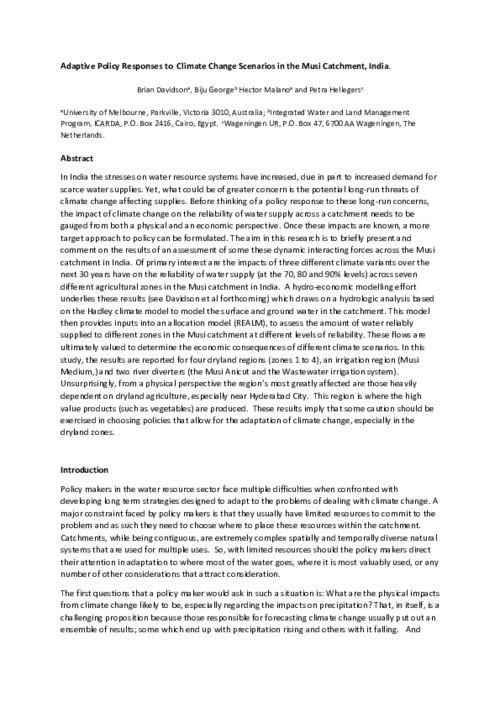Adaptive Policy Responses to Climate Change Scenarios in the Musi Catchment, India
Abstract
In India the stresses on water resource systems have increased, due in part to increased demand for scarce water supplies. Yet, what could be of greater concern is the potential long-run threats of climate change affecting supplies. Before thinking of a policy response to these long-run concerns, the impact of climate change on the reliability of water supply across a catchment needs to be gauged from both a physical and an economic perspective. Once these impacts are known, a more target approach to policy can be formulated. The aim in this research is to briefly present and comment on the results of an assessment of some these dynamic interacting forces across the Musi catchment in India. Of primary interest are the impacts of three different climate variants over the next 30 years have on the reliability of water supply (at the 70, 80 and 90% levels) across seven different agricultural zones in the Musi catchment in India. A hydro-economic modelling effort underlies these results (see Davidson et al forthcoming) which draws on a hydrologic analysis based on the Hadley climate model to model the surface and ground water in the catchment. This model then provides inputs into an allocation model (REALM), to assess the amount of water reliably supplied to different zones in the Musi catchment at different levels of reliability. These flows are ultimately valued to determine the economic consequences of different climate scenarios. In this study, the results are reported for four dryland regions (zones 1 to 4), an irrigation region (Musi Medium,) and two river diverters (the Musi Anicut and the Wastewater irrigation system). Unsurprisingly, from a physical perspective the region’s most greatly affected are those heavily dependent on dryland agriculture, especially near Hyderabad City. This region is where the high value products (such as vegetables) are produced. These results imply that some caution should be exercised in choosing policies that allow for the adaptation of climate change, especially in the dryland zones

